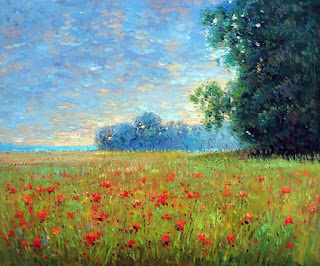“Stopping knife” is a traditional term for an oyster knife
with a weighted end. This makes it a
multi-purpose tool that manipulate glass, dress lead came, act as a fid, act as
a putty knife, and become a hammer. It
also stands up on its own. I find it the
single most useful too in leaded glass panel construction.
This note is how to get from here:
To here:
The process relies on the low melting temperature of
lead. This means that you can use stiff
paper wrapped around the handle of the knife to contain the molten lead until
it cools.
First you set the oyster knife into a vice and cut two
dovetail joints at right angles to each other into the end of the wood
handle. This will insure the lead is
firmly grasped by the wood and will not come loose during use.
I do this with a fine bladed saw such as a hacksaw, coping
saw or even a dovetail saw. There are
Japanese saws that work very well too, but are not so widely available.
The top of the dovetail joint should be just a millimetre or
two off centre.
The angle should be about 30 degrees from vertical. Saw down far enough to get a 6mm chisel into
the space between the two angled cuts.
Chisel out the wood between the cuts.
Repeat for the second dovetail at right angles to the first.
Now you are ready to prepare the oyster knife to become the
stopping knife.
Use paper of more than 90 grams per square metre, such as
cartridge paper to form the narrow cone.
Set the knife at a slight angle on the paper.
Secure the beginning edge to the knife handle with a bit of masking
tape. Mark the paper 5 mm – 10 mm above
the top of the handle. This will be the
fill indicator when pouring the lead. If
you over-fill the cone, the stopping knife will be heavy and uncomfortable to
use.
Roll the paper around the handle to form the cone. This cone should be as close to vertical as
possible. A wide based cone will, of
course, provide stability, but it will add so much weight as to be
uncomfortable to use. It will also be so
wide as be uncomfortable for the palm of your hand.
You can unwrap the paper and start over if the cone becomes
too wide. The key is to start the
wrapping just before the handle begins to taper toward the end of the
handle. The other way of looking at it
is to attach the paper just as the expanding taper stops.
Try to keep the paper cone as smooth as possible. This will form the shape of the lead end of
the handle. You want it to be as
circular as possible without dents or angles.
Now you are ready for the casting.
I use a small old cast iron pot to melt the lead. I place this over a camping gas burner to
provide the heat. I promise that I did
straighten the stabilising legs before lighting the camping burner.
Put some old lead came into the pot to be melted. While this is coming up to heat, place your
wrapped oyster knife in a vice with heat resisting materials around the site to
catch any spills.
Put sufficient lead into the pot, as there will be
impurities floating on top and the lead will cool quickly when taken off the
heat. The photo below shows the amount
of lead used. This 100mm diameter pot
has lead barely covering the bottom. You
do need enough lead to complete the pour at one go, as a second pouring will
not stick to the first adequately.
The photo shows the last piece of came just about to be
melted. This is the time to begin the
pour. If the lead is too hot, it burns
the wood creating gases and multiple bubbles splashing hot lead and leaving an
unpleasant surface for the tool. As the last piece of the came melts and leaves its
impression as the piece on the left, it is time to pour.
Pour at a steady rate into the paper cone until you reach
the height indicator you previously marked in the paper. When you stop pouring, set the pot on a heat
proof surface. You will notice some
smoke and browning of the paper. That is
normal. This picture shows the effect of
the hot lead on the paper once the smoking has finished.
This photo shows the inside of the cone while cooling. The cooling process will take about an
hour. You will be able to check, by
touching the paper, how hot the whole is.
This shows the roughness of the handle end. This is due to the bubbling from the
scorching of the wood and paper.
When the paper is removed and the lead is fully at room
temperature you can use a rough file to remove the bubbling and to round the
edge of the lead.
The oyster knife has been transformed into a stopping knife
and is ready to use.




























